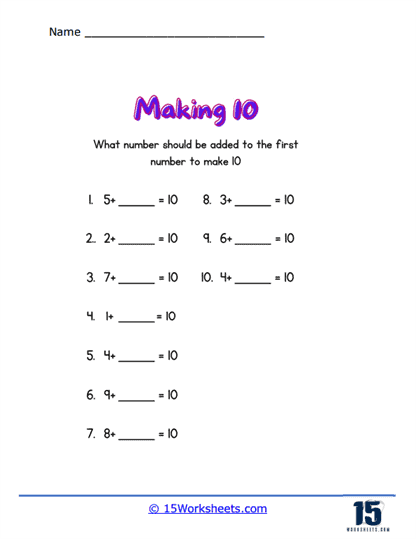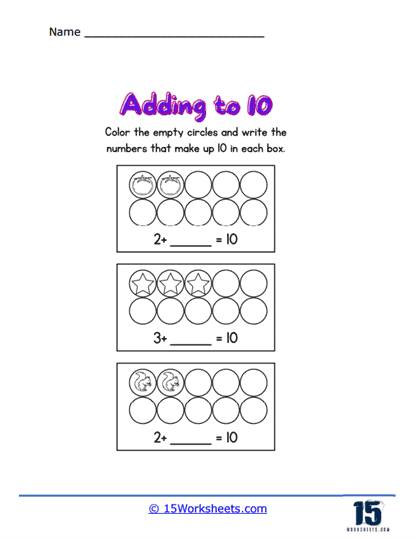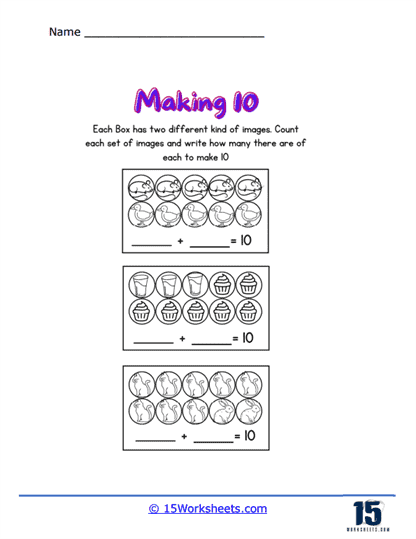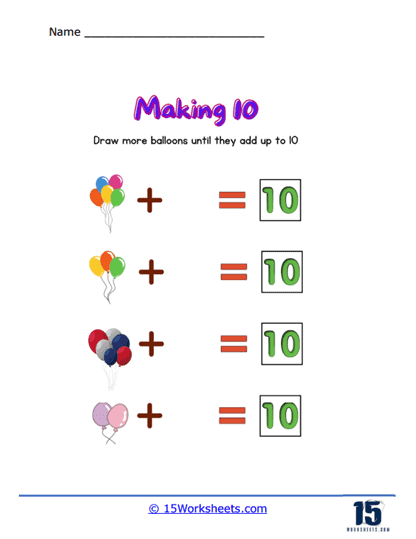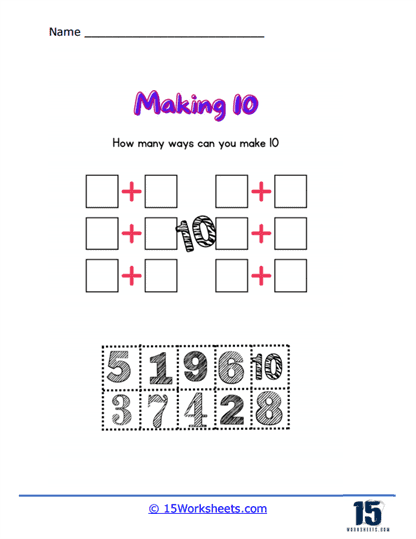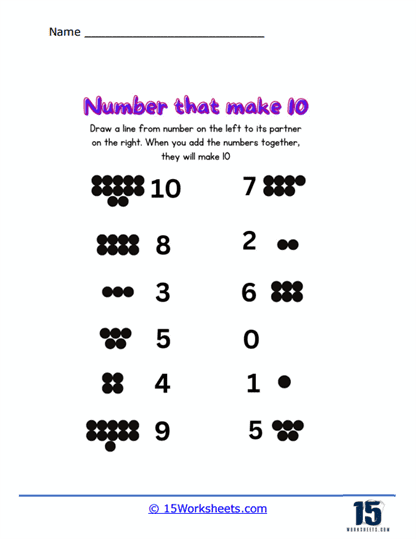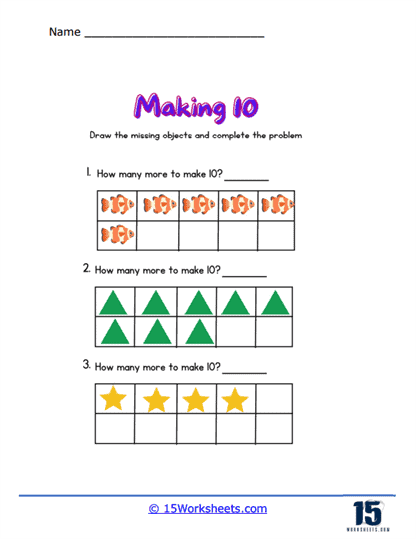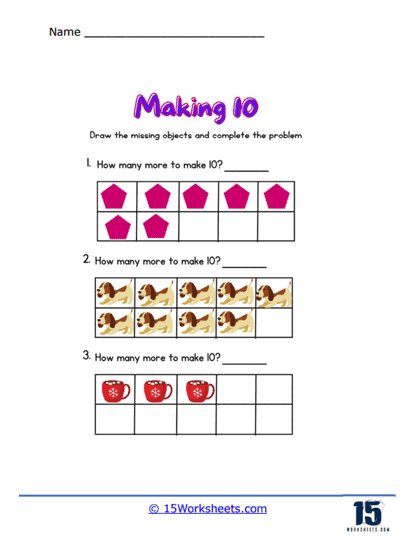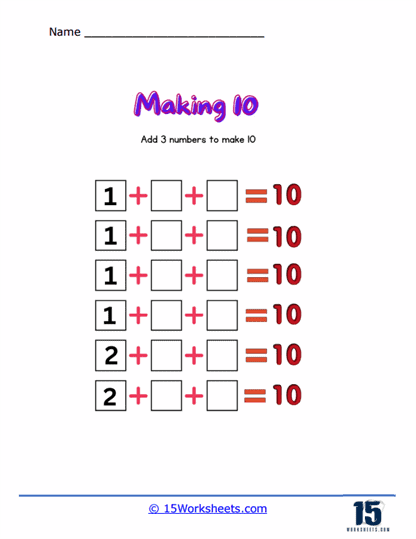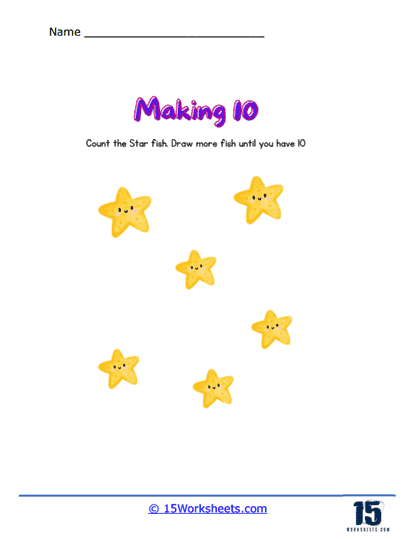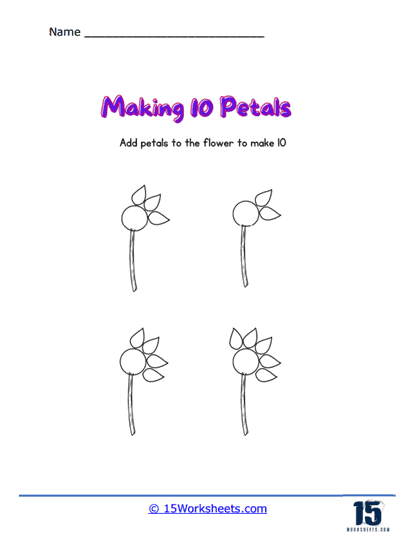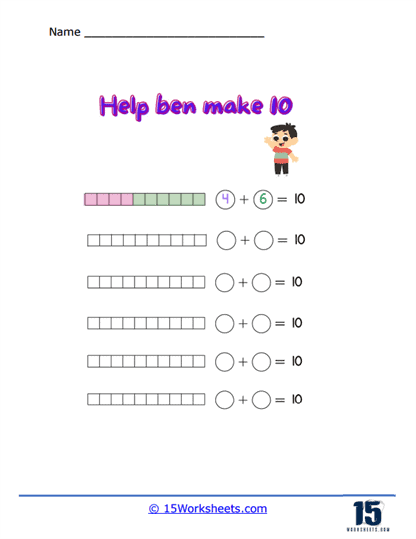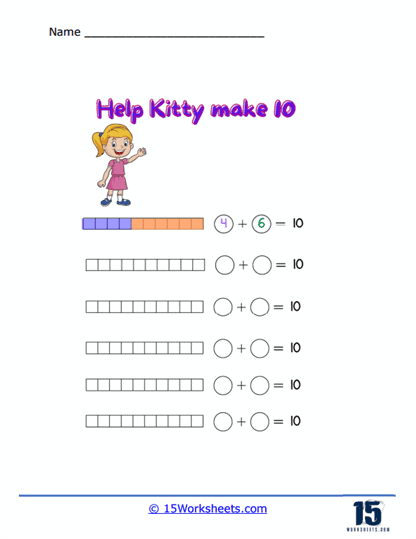Making 10 Worksheets
About These 15 Worksheets
Making 10 worksheets are educational activities designed to help children learn and practice the concept of composing and decomposing the number 10, a fundamental skill in early mathematics. These worksheets focus on finding combinations of numbers that add up to 10, building a strong understanding of number relationships and addition.
A Making 10 worksheet is all about figuring out different ways to add up to the number 10. You might be thinking, “I already know how to add up to 10!”, but this worksheet helps you explore all the possible combinations in a systematic and organized way.
This isn’t just about 1+9 or 2+8. It’s about discovering all the pairs of numbers that add up to 10: 3+7, 4+6, 5+5, and so on. And not just pairs, but groups of numbers too! Like 1+2+3+4, or 2+2+2+4. There’s actually a lot more ways to make 10 than you might think, and understanding this concept is an important building block in mathematics.
But why is making 10 such a big deal? You might ask. Well, the number 10 holds a very special place in our number system. You might have heard of the term ‘base 10’. It means our number system is built around the number 10. When we count, we go from 0 to 9, and then when we need to represent a number bigger than 9, we carry over to the next digit and start again from 0. We have tens, hundreds, thousands, all based on multiples of ten.
By understanding different ways to make 10, you can also start to understand bigger numbers more easily. Say you have to add 37 and 15. That might seem tricky, but if you know that 7 and 3 make 10, you can break 15 into 10 and 5. Then, you can add 37 and 10 to get 47, and then add the leftover 5 to get 52. By using ‘Making 10’ skills, you can simplify problems and make them easier to solve.
Now, let’s talk about what a Making 10 worksheet looks like. A Making 10 worksheet could be set out in a variety of ways. Some might give you one number and ask you to find its partner (for example, if they give you a 3, you need to write down 7, because 3+7 equals 10). Other worksheets might give you a list of numbers and ask you to circle groups that add up to 10. Or they might have you fill in the blanks in number sentences, like “__ + 4 = 10”.
What Exercises Will You Find In These Worksheets?
Making 10 worksheets come in various formats, such as:
Missing Addends – Worksheets with addition problems where one addend is missing, and children need to determine the number that, when added to the given number, results in 10.
Ten Frames – Worksheets featuring ten frames—grid-like structures consisting of two rows of five boxes each—where children fill in the boxes with counters, stickers, or drawings to represent different combinations of numbers that add up to 10.
Number Bonds – Worksheets with number bonds, which are visual representations of the relationship between numbers. Children fill in the missing numbers to create pairs that add up to 10.
Cut-and-paste Activities – Worksheets where children cut out number tiles and arrange them to create addition problems or number pairs that add up to 10.
Word Problems – Worksheets with word problems or real-life scenarios that require children to find combinations of numbers that total 10.
Making 10 worksheets offer several benefits for children:
Number Sense – Understanding the relationship between numbers and how they can be combined to form 10 helps develop a strong foundation in number sense.
Addition Skills – Practicing making 10 strengthens a child’s addition skills and prepares them for more advanced arithmetic.
Problem-solving – Children use problem-solving skills to find the correct combinations of numbers that add up to 10.
Number Fluency – Regular practice with making 10 worksheets can improve a child’s number fluency and mental math skills.
Confidence – Mastering the concept of making 10 builds confidence in a child’s mathematical abilities, setting the stage for success in more advanced math topics.

